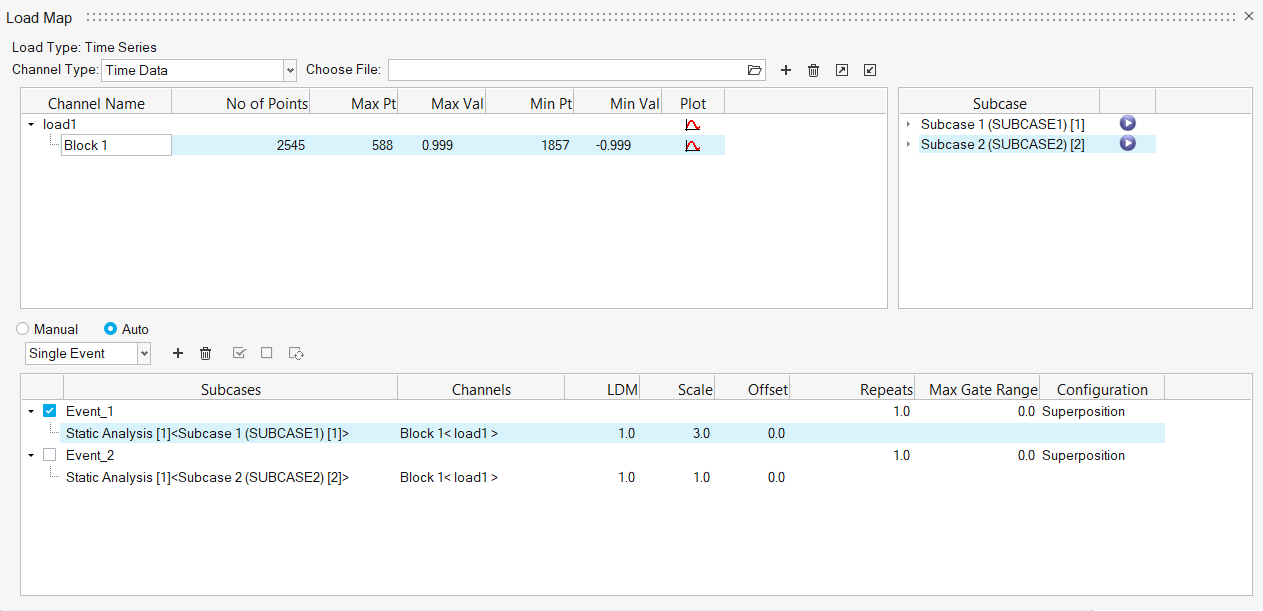Load Maps
Use the Load Map tool to import/create multiple channels (load histories) which are then paired with subcases/loadsteps to create the fatigue events.

The Load Map dialog consists of three parts. The top-left part
is used to create, import, and manage the channels
(load histories); the top-right part displays the available subcases; and the bottom
part is used to create events.
Tip: Right-click in
empty space in the channel or event windows to quickly expand or collapse
folders.
The information displayed in this dialog is dynamic. The available options change depending on the load type and the channel type.
The following table summarizes the channel types that are available
based of the type of loading assigned in the fatigue tools.
| Type of Loading | Channel Type |
|---|---|
| Time Series | Time
Data Constant Amplitude Block Loading Duty Cycle (*.dcy) |
| Transient Response | Transient Response |
| Modal Superposition | Eigen Value
(*.pch) CMS (*.mrf) |
| Random (PSD Stresses) | PSD Stress |
| Random (Input PSD with FRF) | Input PSD: Phase and
Magnitude Input PSD: Real and Imaginary |
| Sine Sweep | Constant Load Variable Scale |
Note: Derived loadcases (by linear superposition) can now be created and saved in
HyperLife session files.